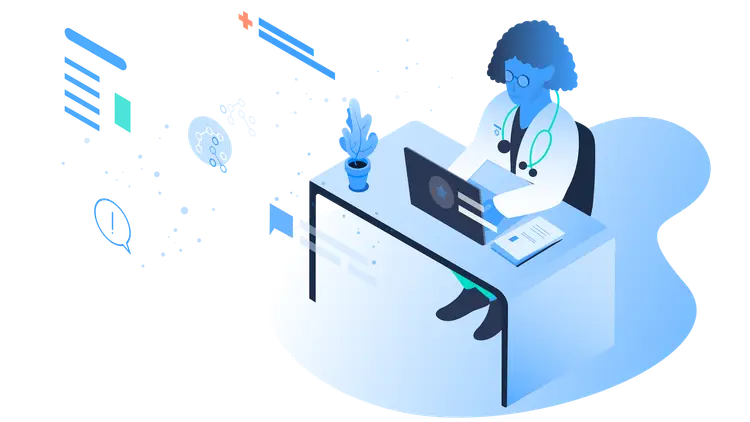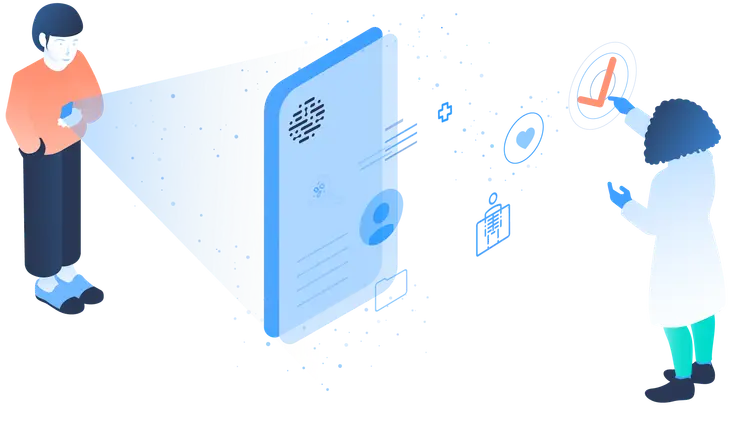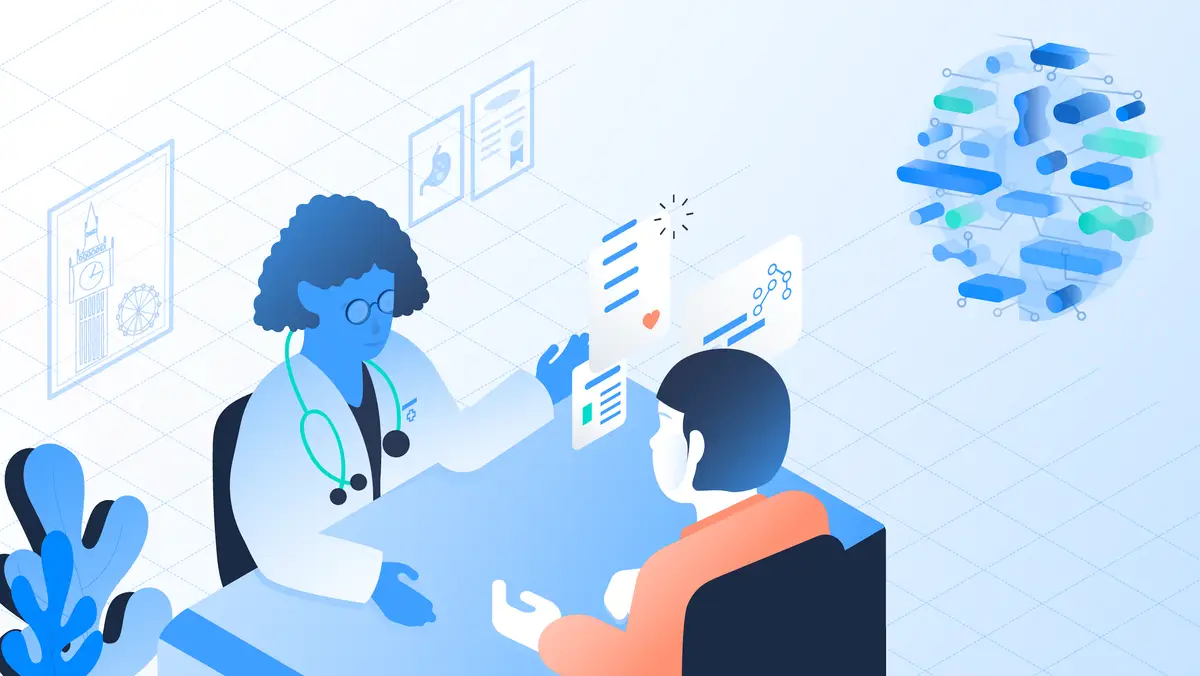The impact of AI on doctors’ day-to-day practice is inevitable and often misunderstood. We asked our clinical experts Dr. Baluch and Dr. Upadhyay, two English primary care doctors, about how working with AI is affecting their clinical practice.
Living the supply and demand problem
Welcome to the present day, where information is easily accessible at just the click of a mouse or the tap of a finger. With new information continuously pouring in, it can seem a bit overwhelming to remain up to date, but it also makes it much easier to ask questions or research symptoms your patients may be experiencing. This means better access to medical knowledge for both doctors and patients, and hopefully, this gives doctors a bit more time to consult patients.
As Dr. Upadhyay puts it, “As a doctor, I’m living the supply and demand problem: massively increased demand for health information and care, and a short supply of doctors. The lack of resources and lack of time has forced us into a model of reactive care.”
That’s just it. Doctors lack time – time to read every medical journal published on the latest human health knowledge, and the quality time needed with the patient. Dr. Upadhyay goes on to say, “Some doctors are frustrated but so are our patients. This supply and demand problem puts extra pressure on the doctor–patient relationship.”
From medical guardians to guides
Digitalization makes information more readily accessible. As Dr. Baluch explains, “Health information is being democratized and is freely available, empowering patients to find knowledge themselves.” And with that accessibility and autonomy, the roles of doctors are changing. Dr. Baluch sums this up by explaining how the role of doctors changes from “being guardians of this knowledge to more like guides.” Ports of information are open to the public, but you still need guides to help navigate the sea of medical knowledge and to guarantee each shore you land on is safe and credible.

Curators of credible medical information
Yes, medical information is much more accessible to the public – 7 percent of all Google searches are health-related – but people are still a bit hesitant about placing their health in the hands of the internet. They need to feel confident that the information they’re receiving about their health is trustworthy.
“For many people, it can be difficult to tell whether what you’re reading online is a credible source or not,” explains Dr. Upadhyay. “However, trustworthy apps have the potential to empower people by helping them find credible information about their symptoms – something that’s actually based on evidence curated by doctors. That means apps asking questions in a similar way we would – to really help someone understand and make a more trusted decision as to how worried they should be about their symptoms.” Credible online sources of health information also reduce the time spent in consultations debunking medical misinformation.
As part of that guiding role Dr. Baluch mentioned, doctors “have to be very engaged with digitalization and lead patients towards the trusted information and content that is out there online.” Dr. Baluch continues, “Technology is playing such an important role in consultations, guiding diagnosis and prognosis.”

Give a little, receive a lot
If patients consistently use an app to track their health and to record their medical history, including any recurring symptoms, and if doctors have access to this up-to-date record, then it makes sense that proactive health management could become a standard part of most patient-doctor dialogues. As Dr. Baluch and Dr. Upadhyay put it, “It’s shifting the relationship beyond the snapshot of episodic consultations.”
Essentially, patients provide the necessary information, making it easier for doctors to assess and then initiate a proactive health management conversation. Patients give a little in the beginning and throughout to receive a lot in return – such as monitored activity data, exercise, weight, blood pressure, and pulse readings. This can help doctors discuss specific lifestyle interventions for patients with diabetes or at risk of developing it or other chronic diseases, such as high blood pressure.
This also allows doctors to have more meaningful insights and tracking progress – they will ultimately have the ability to tweak and improve treatments based on higher resolution information in real-time. Dr. Upadhyay continues: “Let’s think more upstream when it comes to preventable causes of disease – especially the scourges of modern society – i.e. cardiovascular and metabolic diseases. We have an opportunity where a few critical things are converging, such as people’s openness to digitized health information.”

Dr. Baluch also describes this as empowering as it helps doctors become more predictive. He continues: “We already have programs embedded within the patients’ electronic record that can predict the chances of something more serious happening – for example, osteoporosis and cardiovascular disease – and this allows us to have earlier discussions about lifestyle changes people can make to prevent serious conditions from developing.”
Pass the megaphone to digital health
As Dr. Upadhyay states, “Primary care, public health, and digital health are converging to promote proactive health management – the lifestyle choices that can help stop people from getting sick in the first place.”
Digital health technology such as AI can nurture this behavior change through continuous engagement with users. As Dr. Upadhyay says, “It’s a scalable way of reaching a much bigger audience and allows for better, more frequent engagement with people.” Digital health is holding a megaphone in its hand, cheering mass health communications to the world.

Hand in hand, side by side
We know technological advances and AI are essential and will continue to affect doctors and their work. But, to ensure these advances have a positive impact, doctors and patients need to have a close involvement in the development process from the beginning. How so? Well, keep an eye out for a follow-up article where Dr. Baluch and Dr. Upadhyay discuss the importance of doctors’ involvement throughout the entire process – from the very beginning ‘til… well, always.
